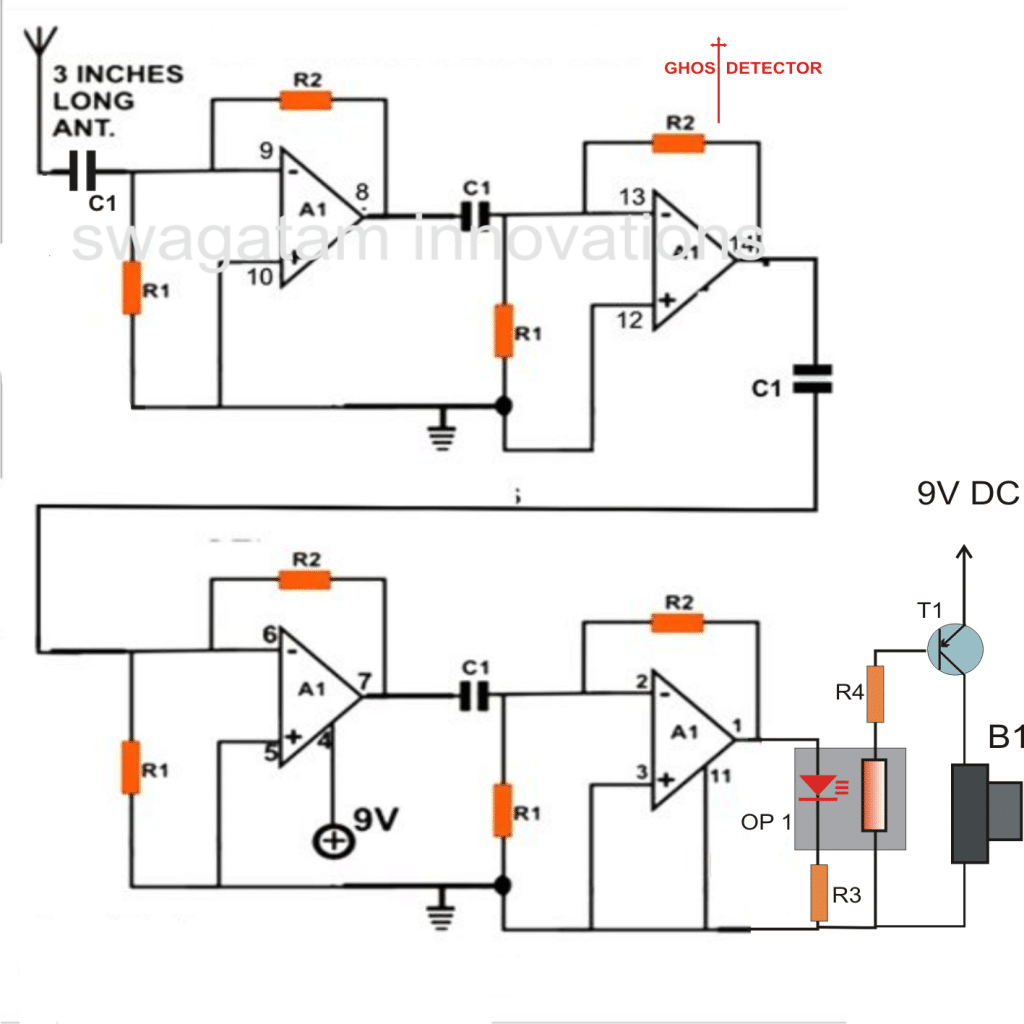In this article I have explained to make a simple ghost detector circuit or a paranormal being detector circuit for quickly investigating a possibly infested area.
Introduction
Do you believe in the existence of ghosts? Well some of you may answer positively while some may just nod their heads showing sheer skepticism regarding the issue. Whatever may be the reactions; nobody just can’t deny or ignore the responses delivered from the circuit I have explained in this article.
Here we are discussing a super simple yet super sensitive paranormal activity sniffer circuit, which can be effectively and possibly used for detecting ghosts or similar supernatural existence within a range of 10 meters.
Many of these circuits may be built and posted at definite intervals for securing a certain premise having a large area.
The circuit incorporates an alarm at the output which sounds immediately on detecting a paranormal intrusion. The circuit is ideally suited for areas that are prone to ghosts or likely of getting infested with similar para-natural sneakers.
WARNING 1 – THE DEVICE HAS BEEN TESTED WITH POSITIVE RESULTS AND IS PROVED TO BE EXTREMELY ACCURATE WITH THE DISCUSSED DETECTIONS. FOLKS WITH WEAK HEARTS OR TENDER PERSONALITY ARE ADVISED NOT TO GO ABOUT WITH THIS DEVICE, BECAUSE THE DEVICE NOT ONLY DETECTS BUT ALSO COINCIDENTALLY HAS THE ABILITY TO ATTRACT THE PARA-BEINGS.
WARNING 2 – THE DEVICE CAN BE TESTED IN MORGUES, GRAVEYARDS, cemeteries etc. ZEDS ARE THE ONES WHICH ARE INSTANTLY DETECTED BY THIS DEVICE EVEN FROM DISTANCES MORE THAN 50 METERS. NO DOUBT CREATURE LIKE ZEDs WILL HATE THIS DEVICE….SO BEWARE.
Ghost Detection Concept
It has been found through experiments by many researchers that paranormal occupancy is strongly accompanied by RF disturbances ranging from a few Hertz to many Kilohertz.
These signals may be directly proportional to the hostile nature of the ghost. Zombies are found to be emitting the strongest signals and are therefore considered the most horrible among the lot.
The circuit of a ghost detector discussed here is typically configured for capturing the above RF emissions from these creatures and transforming them into more human understandable electronic indications.
Using 10 LED Bar Graph (New Update)
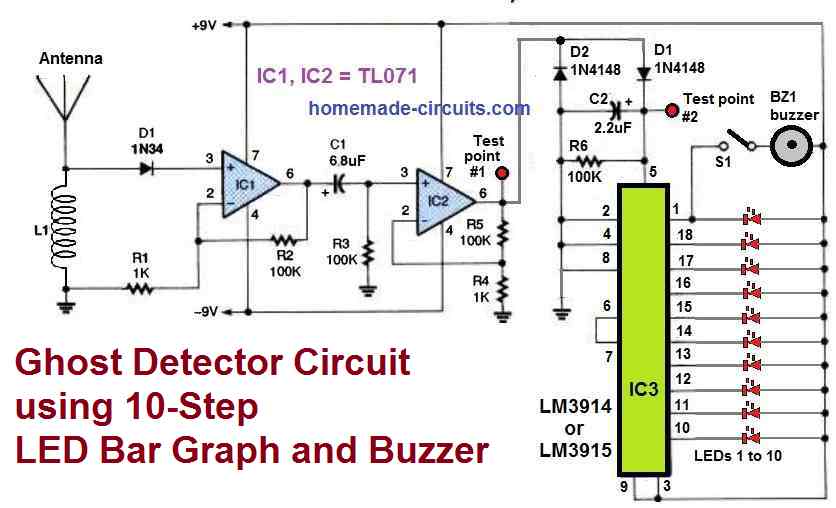
As shown above, this new ghost detector circuit using 10 step LED bar graph will measure the existence of a paranormal activity more accurately than any of the other circuits ever built.
It is hugely sensitive and can detect the presence of the smallest level of paranormal occupancy.
For low level vibrations, only a few LEDs will light up. However, more number of LEDs will start illuminating as the paranormal detection becomes stronger and stronger.
If the infestation is too high, you may find all the 10 LEDs illuminating along with the buzzer beeping....time to leave the area ASAP.
Making the Sensing Coil L1
The detector coil L1 is built by winding 100 turns of 30 SWG super enameled copper wire over a 1/2 inch ferrite rod.
The antenna can be simply a 6 inches flexible wire.
The test points 1 and 2 can be used to check the voltage levels using a digital multimeter or can be hooked up with an oscilloscope to analyze the paranormal waveforms.
Using IC LM324
A single versatile IC 324 is involved in the whole operation.
The IC is a quad opamp IC, meaning four opamps in one package.
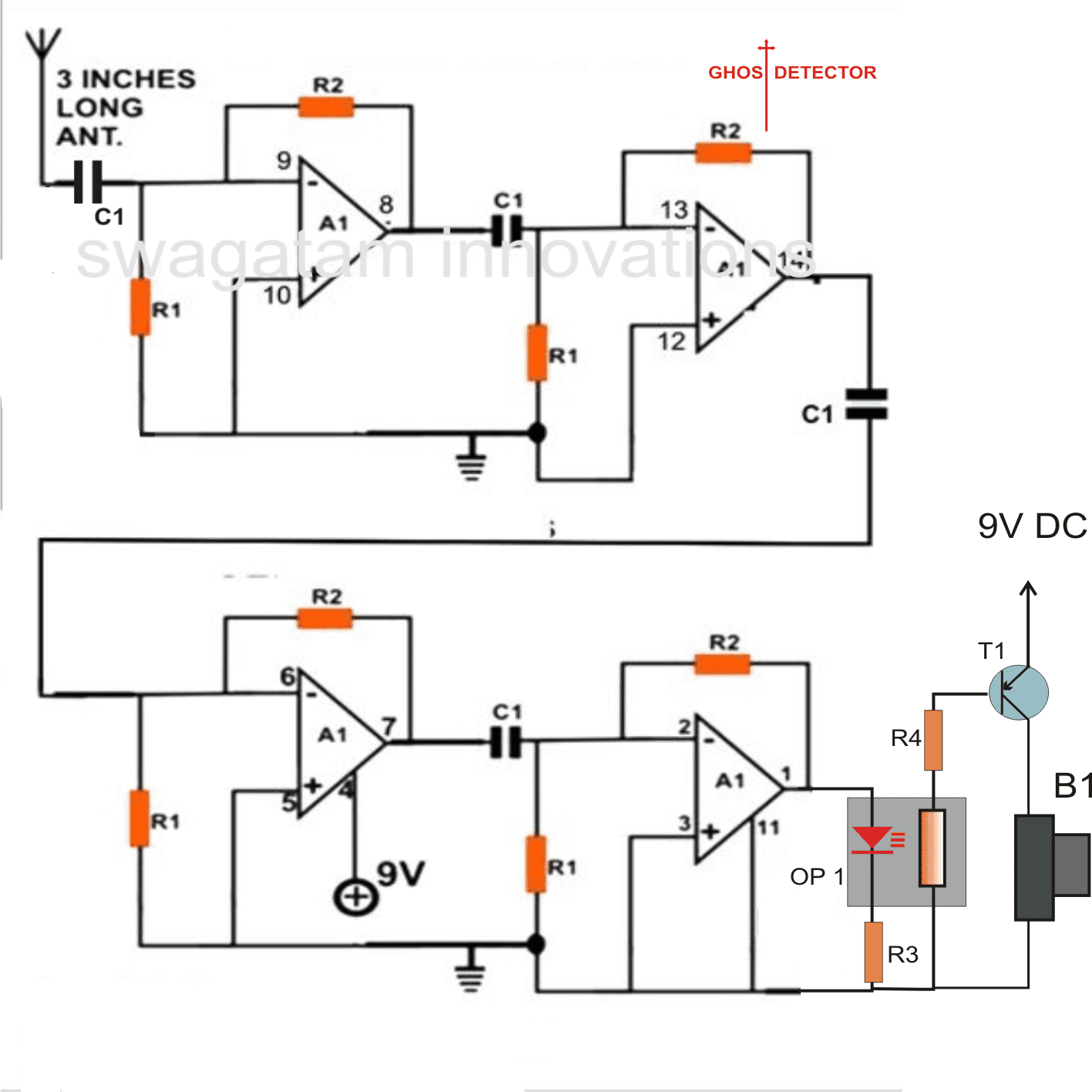
Referring to the figure, the opamps can be seen configured as hi gain non inverting amplifiers.
All the opamps are configured as high gain signal amplifiers.
Tiny electromagnetic or RF disturbances which are typically found being generated during the presence of ghosts or paranormal activities are instantly picked up by the antenna of the circuit and are fed to the input of the first opamp stage at pin #9.
The signals get instantly amplified and are transferred to the subsequent stages for further amplification and enhancement.
The output of the last opamp is connected to an opto-coupler.
The optocoupler is a homemade type, incorporating an LED and an LDR fixed such that their emitting and detecting surfaces are placed face to face inside a light proof enclosure.
Here, the optocoupler is used for sensing the LED illumination that may occur when a certain paranormal activity is sensed.
The illumination produced over the LED is tracked by the LDR whose resistance falls with the LED light.
The fall in the resistance of the LDR activates the connected transistor at the output, which in turn actuates a buzzer or a horn indicating a possible ghost intrusion.
The whole circuit may be built over a small piece of vero-board and should be strictly operated with a 9 volt battery.
The whole system may be enclosed inside a plastic box with the antenna kept protruding out of the box.
Parts List
- R1 = 100K,
- R2 = 2M2,
- R3, R4 = 1K,
- C1 = 0.01uF ceramic
- OP1 = LED/LDR assembly inside a light proof enclosure,
- T1 = BC557,
- B1 = Piezo Electric Buzzer
The above circuit was further modified by one of the enthusiasts Mr.Steven Chiverton, I have explained more regarding the procedures from
Improved Ghost Detector Circuit
The circuit board i made a bit longer and included the ghost detector and at the end i did the circuit you submitted and made sure the photo transistor was opposite to the ghost detectors led one picture is your transistor buzzer circuit i made it separately to test then added it to the printed circuit board with the ghost detector on it.
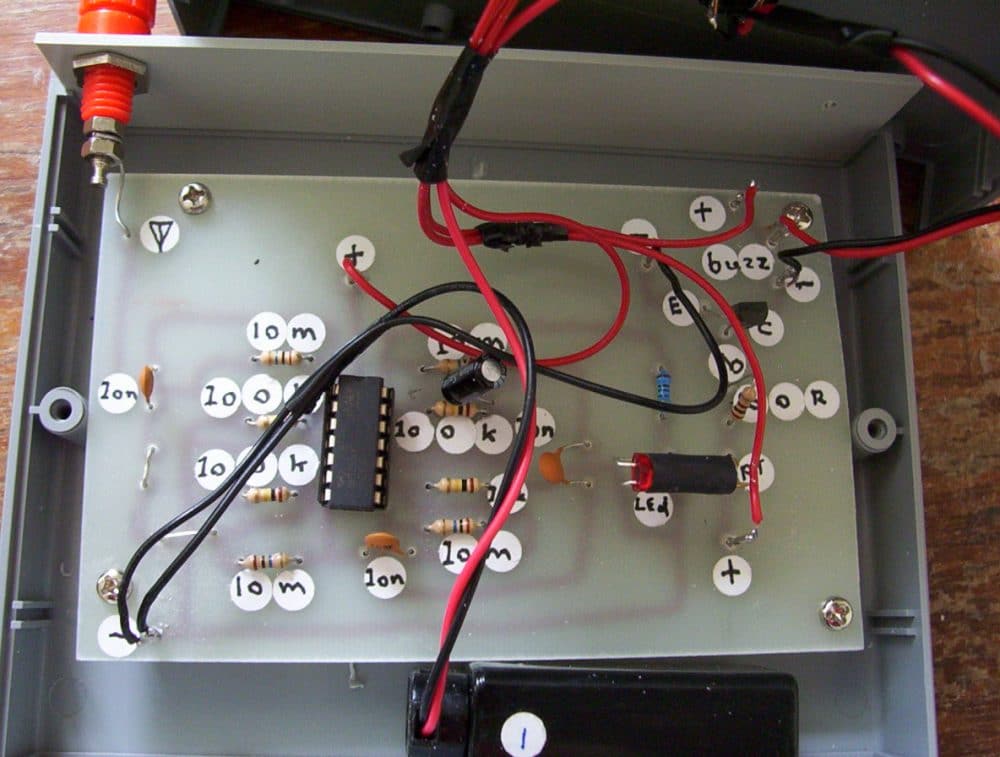
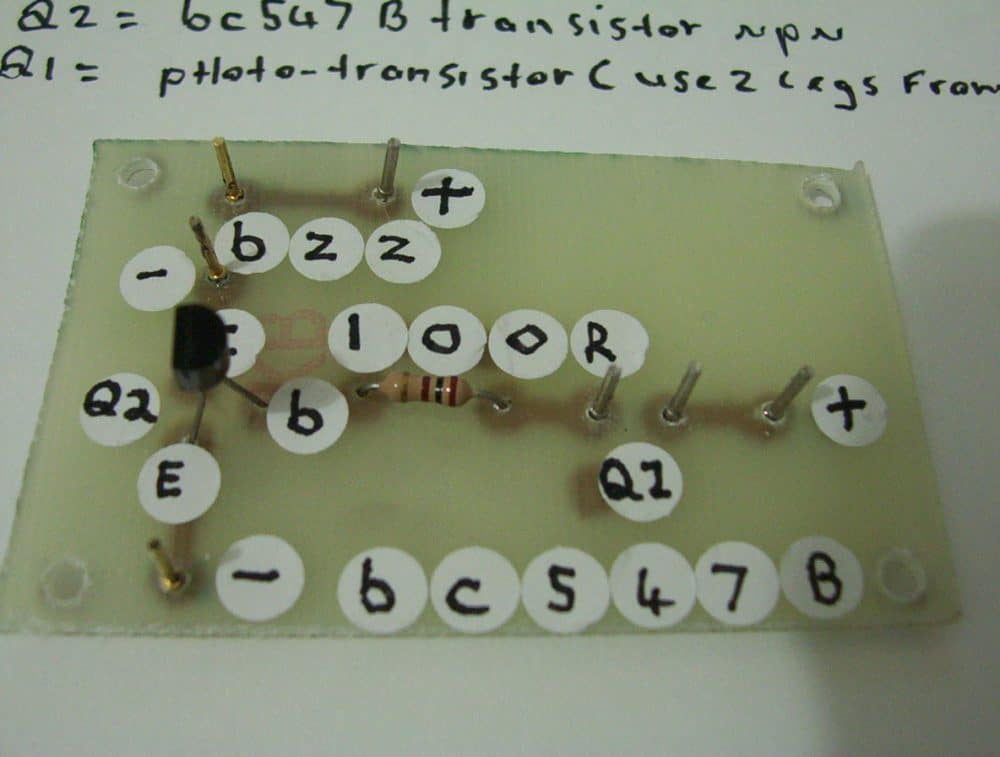
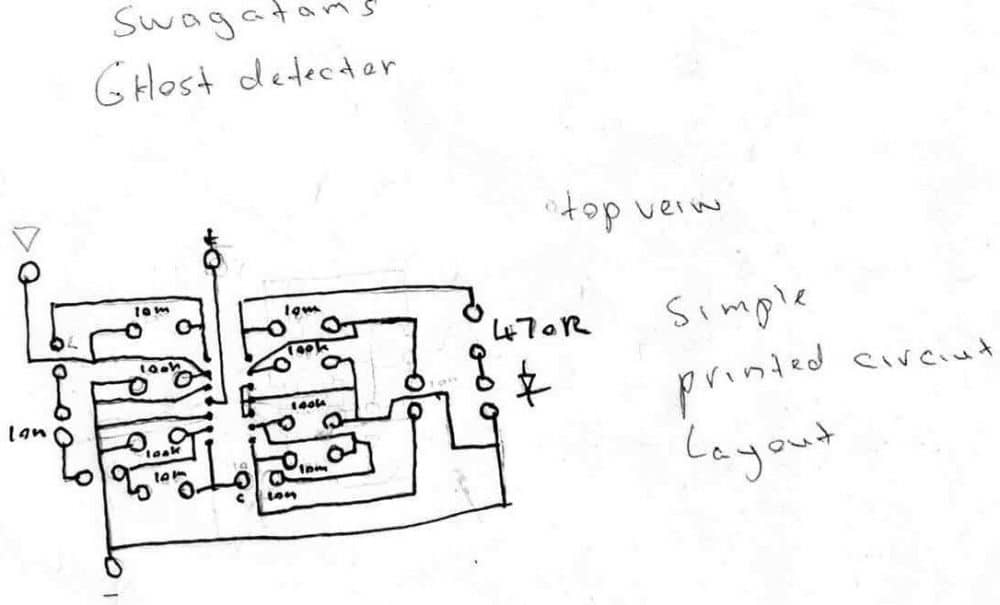
Here is another picture of your optocoupler buzzer circuit for the ghost detector,
i used matrix pins on the board like i do with many circuits.this eliminates the job of having to take the board out of the circuit to resolder wires , buzz wires go to buzzer and q1 wires go to phototransistor, and the positive and negatives go to switch that runs to 9 volts battery to positive buzzer to positive in and negative of buzzer marked with the minus symbol.
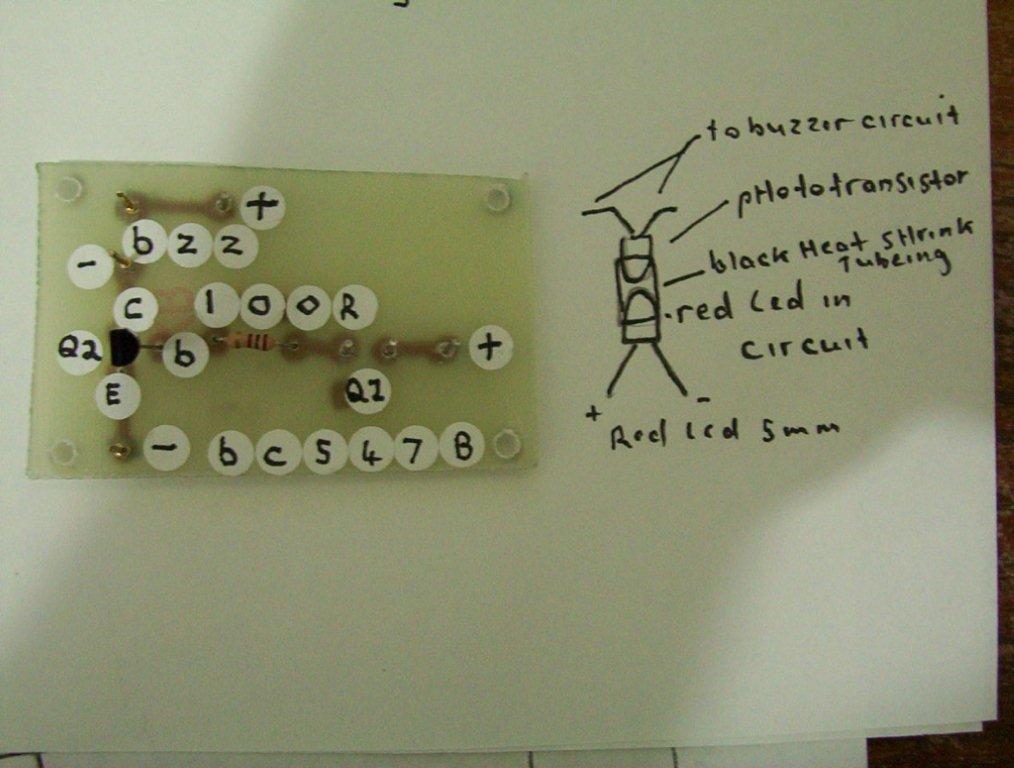
Hi Steven,
You have made this small circuit very special and all the effort you have put is amazing.
Thanks once again,
Swag
Thank you swagatam
It's your circuit your ideas I've upgraded thank you , now we have also the most sensitive lightening bolt detector for its size well have to test it out on a lightening bolt yet even though its very sensitive to the continuous sparking of the electric ignitor on the gas stove here it sounds awesome like receiving pulse rays well you should hear it different from just a hand held gas stove lighter with peizo electric sparks .
Ghost Detector Using Transistors
Here is the talking electronics 6 million gain circuit it may be a good ghost detector circuit to and by changing the bc547 to the bc517 you get a 30 million gain circuit as featured on youtube as a spirit detector but I haven't found any ghosts yet to test it on.
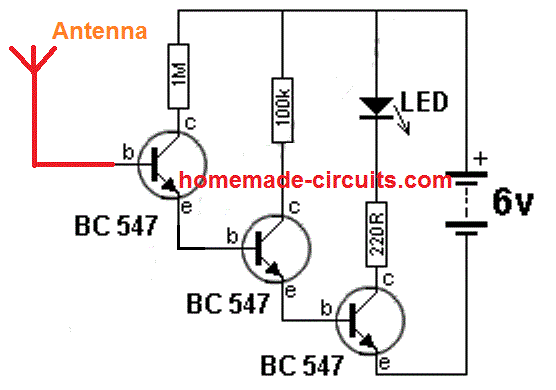
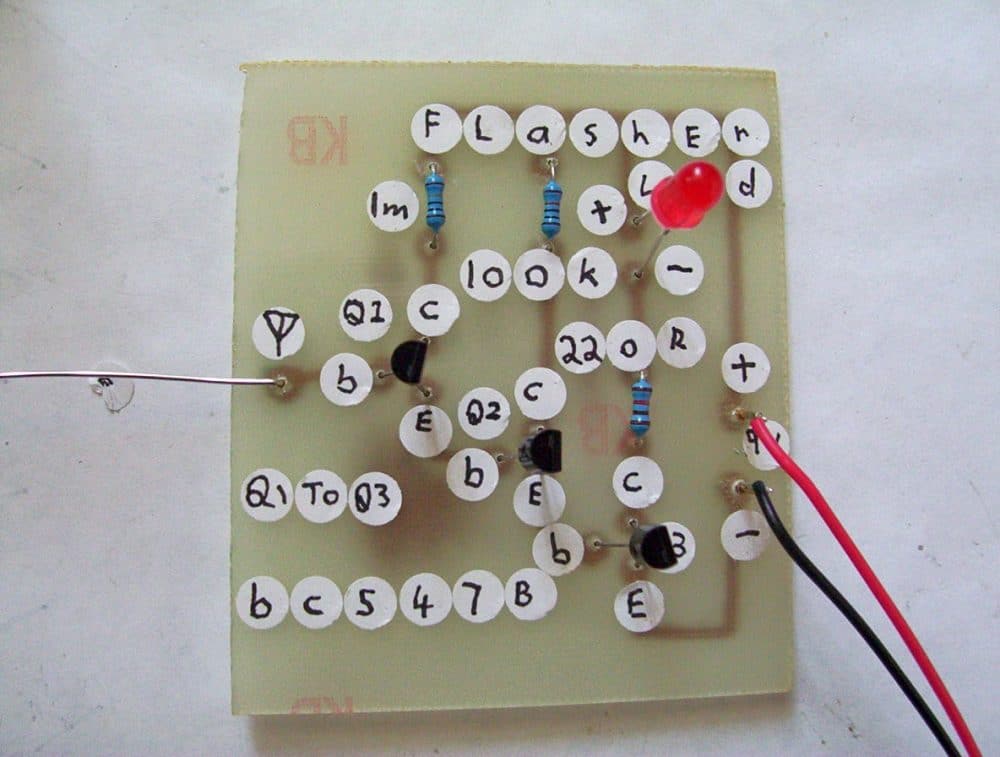
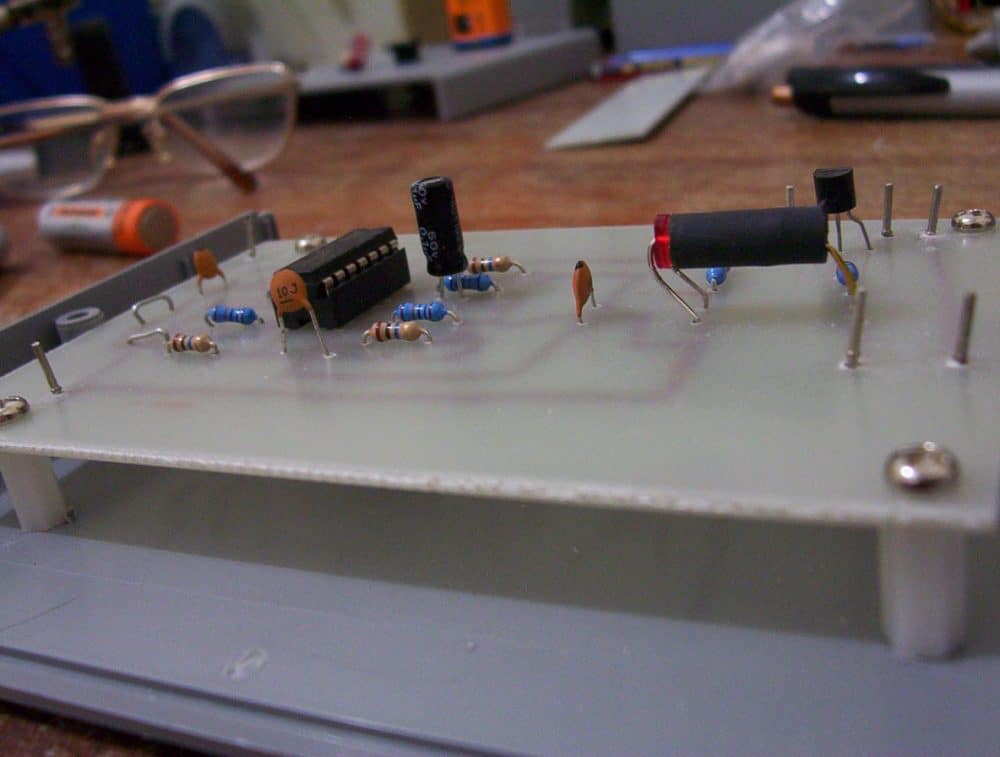
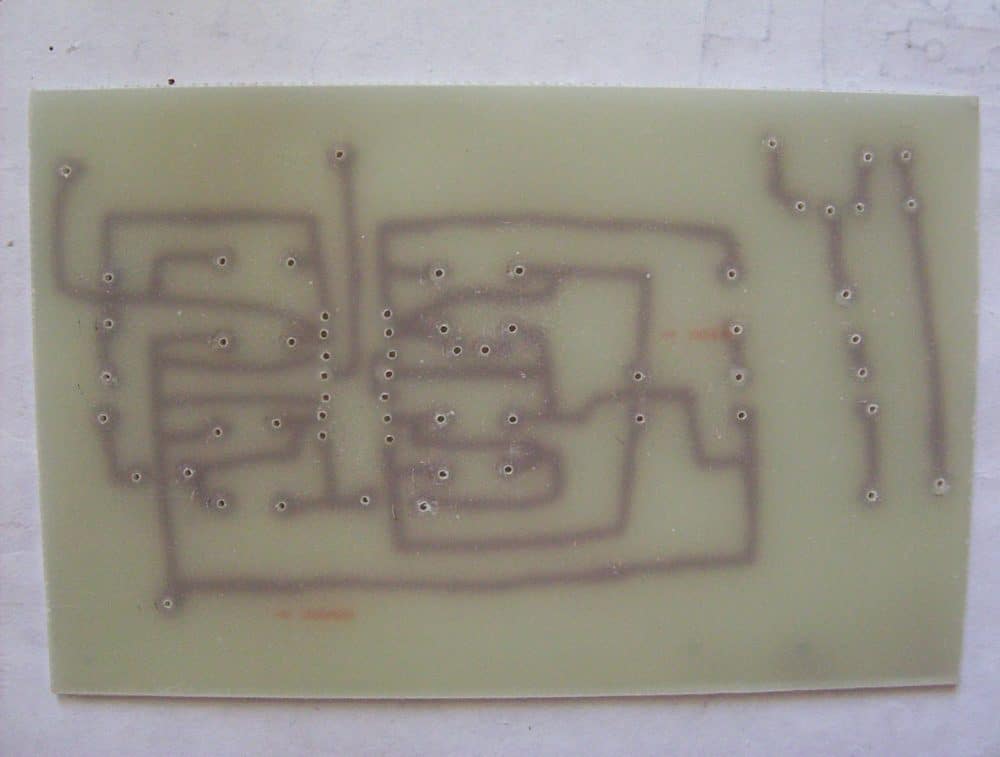
010jpg is the top view of the printed circuit board for the swagatam ghost detector circuit. 006 jpg is a close up of another ghost detector i just made notice the home made optocoupler using the fairchild photo transistor and led at each ends of a short length of black heatsink tubing.
ive changed the 10n ceramics to 10p to see what results i get when ive completed it allcouldn't resist the temptation to build another of your ghost detector circuits, so ill have backup in the case one fails
i hope you find some of these pictures better for your site or collection, this ones half finished so i have to do the wiring then put the rest of the box together as its a 3 peace one and maybe put the buzzer this time in a different area , etc etc i plan to build your ac sensor next to when i get to it ill email you all the details when i get to that one
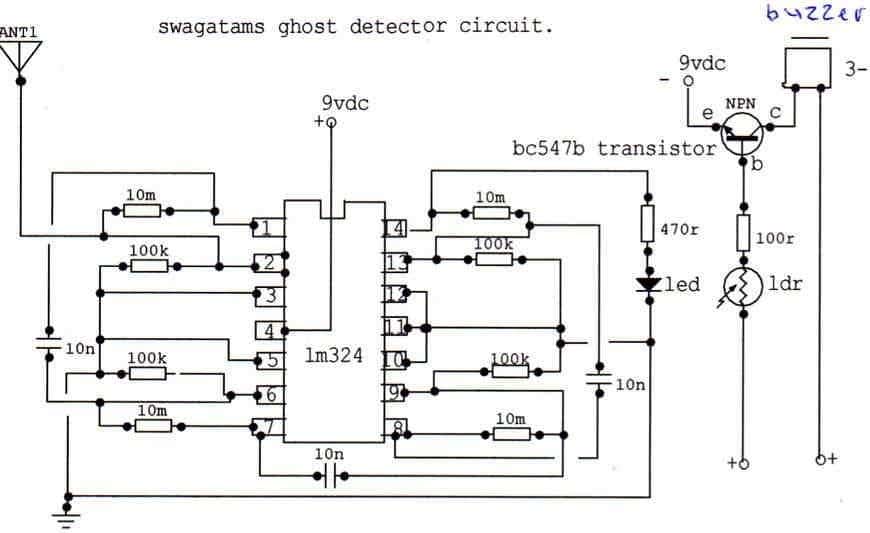
This is how i redraw circuits in a more simpler way using student version circuit maker , note the ic shape in its proper rectangle configuration , drawn using the trax maker tool and the pins stretched into there sizes, and shaped properly using the arrow tool, the numbering for the pins was done 1 number at a time using text tool function then dragged into the positions using the arrow in the program
READERS ARE REQUESTED TO SHARE THEIR EXPERIENCES WITH THIS DEVICE. A PHOTO OR A VIDEO PROOF WILL BE GREATLY APPRECIATED....
